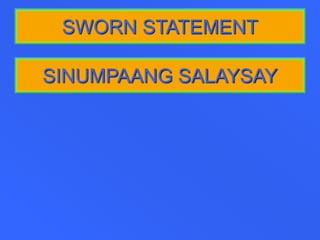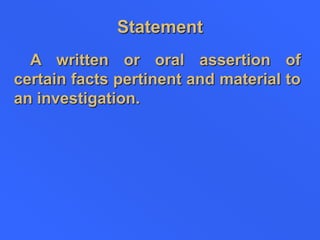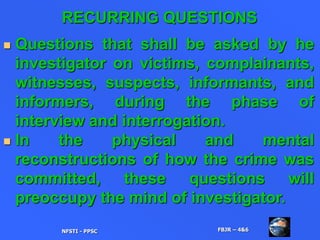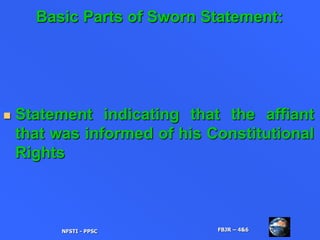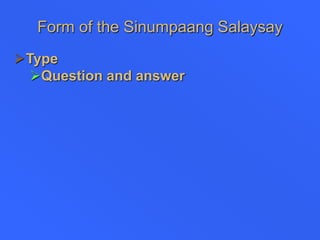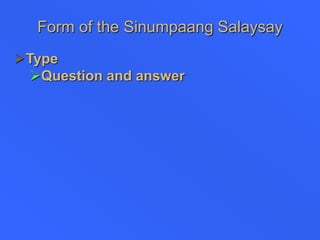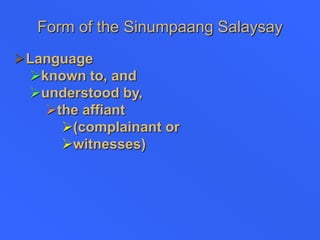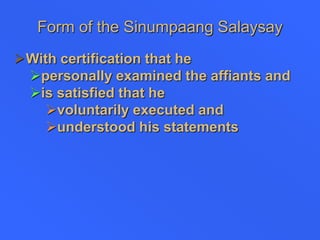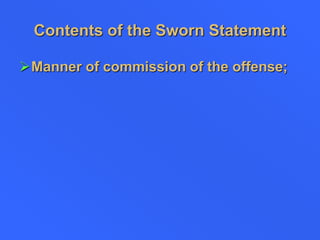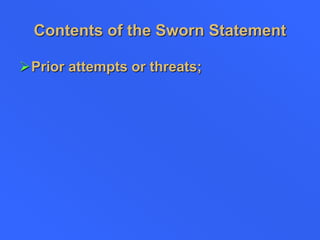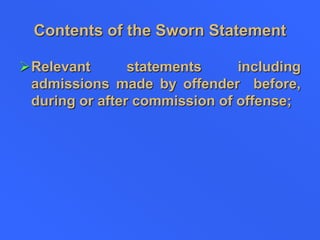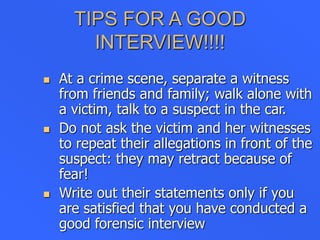The document provides guidelines for obtaining sworn statements from witnesses, victims, and suspects to assist criminal investigations. It outlines best practices for conducting interviews and drafting sworn statements, including using open-ended questions, avoiding leading questions, and getting statements in writing. The document also describes the typical components of a sworn statement, such as identifying information for all parties involved and detailed accounts of the alleged crime.

